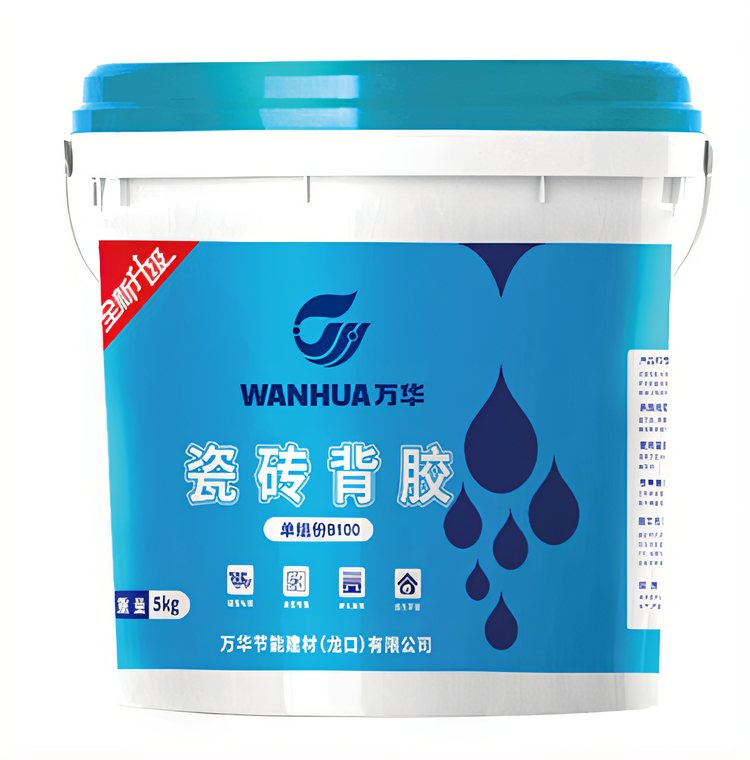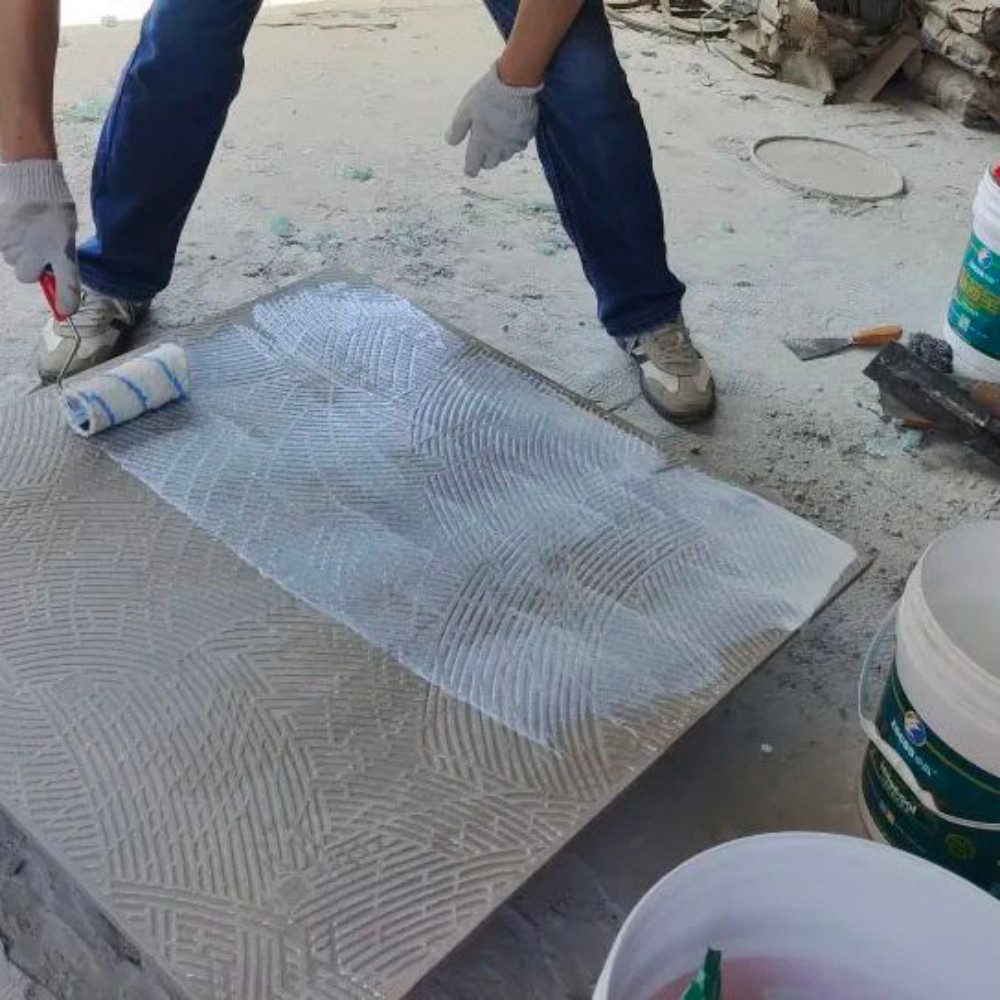

In the actual scenario of tile laying, both experienced tile layers and homeowners who pay attention to decoration details generally have a common misunderstanding: they believe that the stronger the adhesion of the tile back adhesive and the more it sticks to hands when touched, the better the product quality, and the more firmly the tiles will be laid with it. Even some tile back adhesive manufacturers, when promoting new products, deliberately demonstrate such an "effect" - brushing the back adhesive on the back of the tile, and after the adhesive forms a film, touching it with the palm can firmly stick to the tile, and even lift the tile with this adhesion. This kind of demonstration intuitively creates the illusion that "strong adhesion = good tile laying effect", further deepening people's wrong cognition about the quality judgment of tile back adhesive. So, how should we judge the quality of tile back adhesive? It is necessary for us to first clarify the relationship between "whether it sticks to hands" and the quality of the back adhesive.
1. "Stick-to-hand Test" Cannot Determine the Quality of Tile Back Adhesive
First of all, it should be clear that the quality of tile back adhesive has nothing to do with whether it sticks to hands! Single-component emulsion-type tile back adhesive is a new type of tile-laying auxiliary material that has become popular in the decoration market in recent years. Its core function is to be brushed on the back of tiles and then used with tile adhesive or cement mortar to achieve a more stable bond between the tiles and the base layer such as walls and floors through a special mechanism. Just because its function is related to "bonding", many people take it for granted that since it is a product that improves bonding strength, "whether it sticks to hands" should be the most direct judgment standard - back adhesive that does not stick to hands must be of poor quality, and the higher the degree of stickiness to hands, the higher the safety of tile laying. However, this idea has serious deviations, and we must emphasize again: using "whether it sticks to hands" to measure the quality of tile back adhesive is a completely wrong approach.
2. Core Reasons Why the Quality of Tile Back Adhesive Has Nothing to Do with "Sticking to Hands"
(1) The Mechanism of Action is Completely Different
Many people mistakenly believe that the interaction between emulsion back adhesive, tiles, and tile adhesive is like that between glue and paper, achieving bonding through simple physical adhesion. But in fact, the combination of emulsion back adhesive with tiles and tile adhesive relies on extremely complex chemical principles, involving intermolecular interactions, the formation of chemical bonds, etc., which is far beyond what "adhesion" can summarize. If the simple adhesion of "sticking to hands" could really meet the needs, then we could directly use ordinary glue with strong adhesion to lay tiles, and there would be no need to specially develop targeted products like tile back adhesive. More importantly, the bonding strength reflected by "sticking to hands" is extremely limited, and it cannot even bear the weight of small-sized tiles such as 20×20cm, which obviously cannot meet the needs of long-term stable tile laying.
(2) Quality Judgment Standards Are More Complex and Diverse
To judge the quality of tile back adhesive, it is necessary to comprehensively consider a number of key performance indicators, rather than a single "viscosity". Among them, alkali resistance is an important indicator - after tiles are laid, the back adhesive will be in long-term contact with alkaline cement mortar. If the alkali resistance is poor, the back adhesive is easily corroded, leading to a decline in bonding performance; water resistance is also indispensable, especially in humid environments such as kitchens and bathrooms. If the back adhesive is not water-resistant, it may soften and fail when exposed to water, thereby causing tile hollowing and falling off; weather resistance is also crucial, which determines the stability of the back adhesive under different climate conditions such as temperature and humidity, ensuring that the tiles will not have bonding problems due to environmental changes during long-term use.
High-quality emulsion-type tile back adhesive can skillfully make up for the defect of low strength of ordinary pressure-sensitive polymer materials. While having excellent bonding strength to meet the core demand of "no tile falling off", it also has good water resistance and high-temperature resistance, and can adapt to the tile laying requirements of various environments such as living rooms, kitchens, bathrooms, and balconies. Therefore, both homeowners and tile layers should abandon the wrong concept of "sticking to hands means high quality" and judge the quality of back adhesive from a more professional perspective.
3. Core Advantages and Correct Usage of Tile Back Adhesive
Tile back adhesive itself is an excellent decoration auxiliary material. It is made of acrylic monomers as the basic raw material, introducing organic silicon components and a variety of imported additives through copolymerization and compounding technology. It not only has super strong bonding effect but also has good aging resistance. It is a "nemesis" to solve the problem of easy falling off of vitrified tiles and other tiles, and is also an ideal choice for pasting wall and floor tiles, marble, and natural stones. It can significantly improve the bonding strength between tiles, stones and bonding materials such as tile adhesive and cement mortar, fundamentally solving the common problems of hollowing and falling off in tile laying, and is especially suitable for the back treatment of stones and special tiles with low water absorption, dense texture, and smooth surface.
However, to allow the tile back adhesive to give full play to its role, the correct usage method is crucial. Before brushing the back adhesive, it is necessary to ensure that the back of the tile is clean and dry, and thoroughly remove impurities such as floating dust, powder, and oil on the surface - these impurities will form a "barrier layer" between the back adhesive and the tile, directly affecting the bonding effect; after brushing, it is necessary to wait for the back adhesive to dry naturally until it no longer sticks to hands when touched, and then proceed with the construction of tile wall mounting. If these operating standards are not followed, such as brushing the back adhesive without cleaning the back of the tile, or rushing to lay the tile before the back adhesive is dry, it will not only affect the final bonding quality but also cause tile hollowing and falling off in severe cases, leaving potential safety hazards for decoration.
The above content explains the relevant knowledge of tile back adhesive in detail from aspects such as cognitive misunderstandings, quality judgment, product advantages, and usage methods, hoping to provide practical references for homeowners and practitioners who have tile laying needs.

